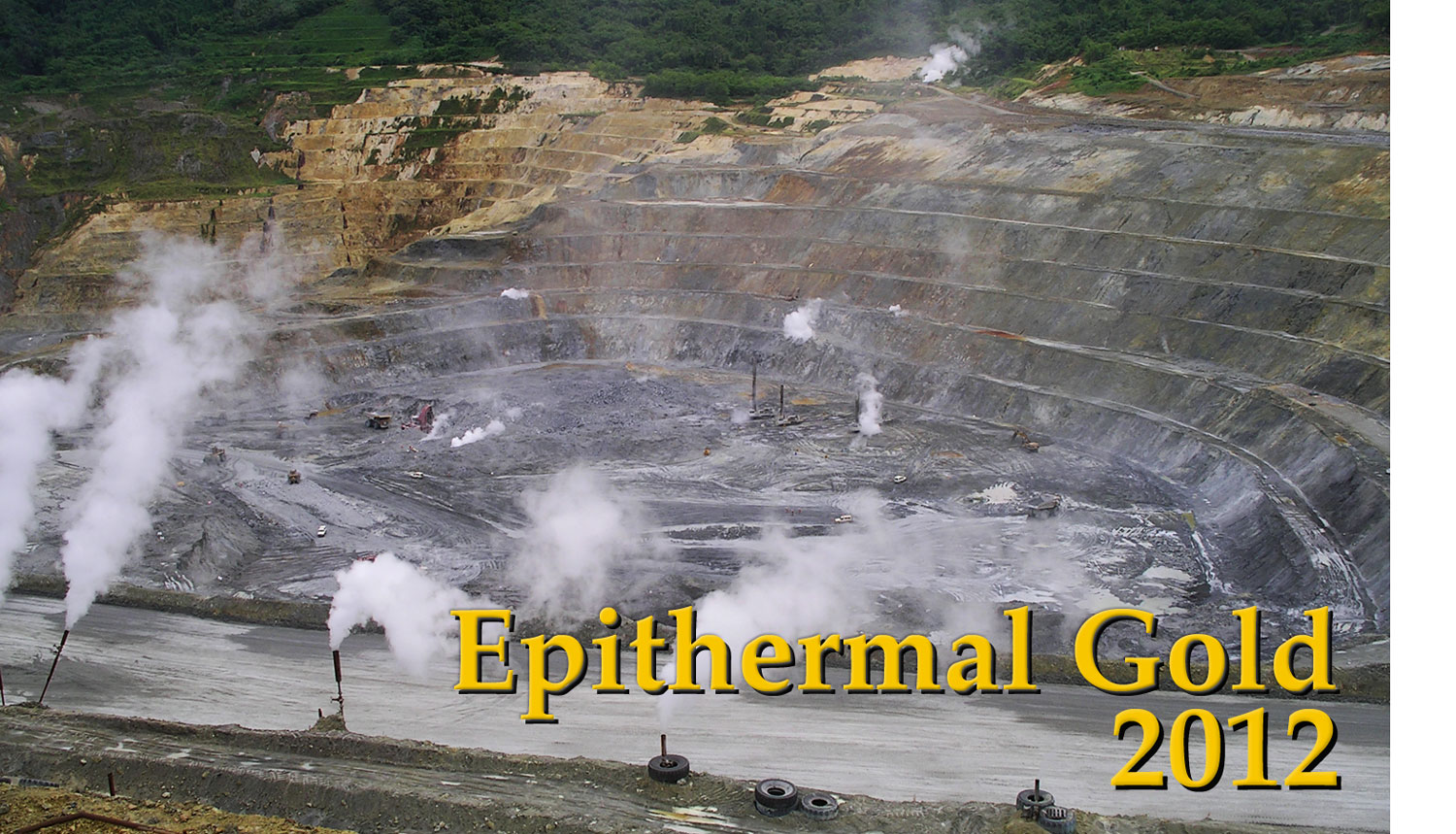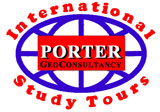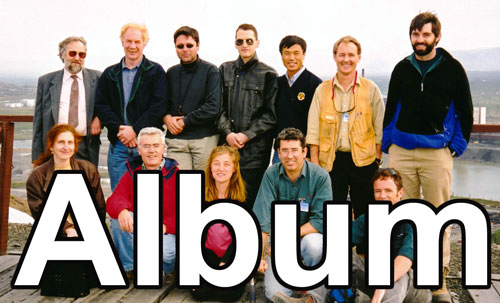| |||||||||||
|
Epithermal Gold 2012 Epithermal Gold Deposits of the Western Pacific 12 to 31 May, 2012 | |||||||||||
|
| |||||||||||

Porter GeoConsultancy continued its International Study Tour series of professional development courses during May 2014, conducting a geological tour to a representative selection of significant examples, and different styles, of epithermal gold deposits in the western Pacific.
This course included deposits in Japan, the Philippines, Thailand, Indonesia and Papua New Guinea, comprising geological mine visits, complemented by field and classroom workshops presented by renowned experts from academia and industry. The program included major low-, intermediate- and high-sulpidation deposits. A number of examples of all three types are closely associated with porphyry Cu-Au mineralisation that range from weak proto- to high grade economic systems, although other intermediate- to low-sulphidation deposits are not. The full tour commenced in Fukuoka, Kyushu, Japan on the evening of Friday 11 May, 2012 and ended in Port Moresby, Papua New Guinea (PNG) on the evening of Thursday 31 May, 2012.
The 23 registered participants were able to take any 3 or more days, up to the full tour, as suited their interests or availability, joining and leaving the tour at appropiate locations along the route. The program was as follows:
The tour commenced when the group assembled in Fukuoka on Kyushu, for an introductory meeting and dinner on the evening of Friday 11 May. The group departed early next morning to begin the Japanese segment of the tour: Following the Sakurajima Volcano visit, and overnighting in Kagoshima, the group returned to Fukuoka by Shinkansen (bullet train) to catch a flight next day, Wednesday 16 May, via Taipei and Hong Kong to Manila.
The morning after arriving in Manila, the group travelled north by charter minibus to the Mankayan Mineral District in northern Luzon, to study the: The final day in the Philippines, a Saturday, was spent travelling from Mankayan to Manila to catch an overnight flight to Bangkok in Thailand.
The first day in Thailand, a Sunday, was spent travelling north in two charter minibuses to Taphan Hin, near the Chatree mine, arriving mid-afternoon. A full day and a half was spent at Chatree, before driving back to Bangkok to overnight.
The group departed Bangkok for Jakarta, via Singapore on Wednesday 23 May. The original plan had been to first visit the Martabe deposit in Sumatra on Wednesday and Thursday. However, shortly before the visit, a serious aviation incident involving the aircraft and airline to be utilised for the local flight within Sumatra deemed the planned flight to be unsafe. As an alternative, the group were given a comprehensive presentation supported by detailed plans, ore and country rock specimens and drill core in the comany's head offices in Jakarta on Thursday 24 May. The program in Indonesia was: Access to Tujuh Bukit utilised two helicopters for a 165 km flight out of Denpasar, on Bali. Following the visit, the group had to overnight on Java, before travelling back to Denpasar on Sunday 27 May. This latter transfer required a back-up, last minute improvised journey by minibus and ferry across the Bali Straight, as bad weather prevented the 120 km helicopter transfer scheduled. The ongoing group had then departed that night to fly from Denpasar, via Sydney in Australia and Port Moresby in Papua New Guinea, to connect with the waiting tour charter flight to Rabaul, finally arriving on the following evening.
Access to all of the mines in PNG required charter aircraft. The slightly smaller group visiting Lihir on Tuesday 29 May utilised a single aircraft, which after the visit, returned the group to Port Moresby that night. On the following morning, two aircraft transferred the group to Bulolo from where they were ferried by hire minibus on the 2 hour drive to Hidden Valley. On return to Bulolo that night, where the group overnighted to fly on to Mount Hagen next morning and from there to Kairik, the airport for the Porgera mine. The details of the deposits visited is a follows: In the mid afternoon, following the Porgera visit, the two charter aircraft transferred the group via a near two hour flight to Port Moresby, where the tour ended and the group dispersed. This study tour was planned, organised and managed by Porter GeoConsultancy. Image: Top left - The main open pit at Ladolam, Lihir Island, Papua New Guinea, in an active epithermal field, venting hydrothermal fluids as steam. | |||||||||||
| |||||||||||












